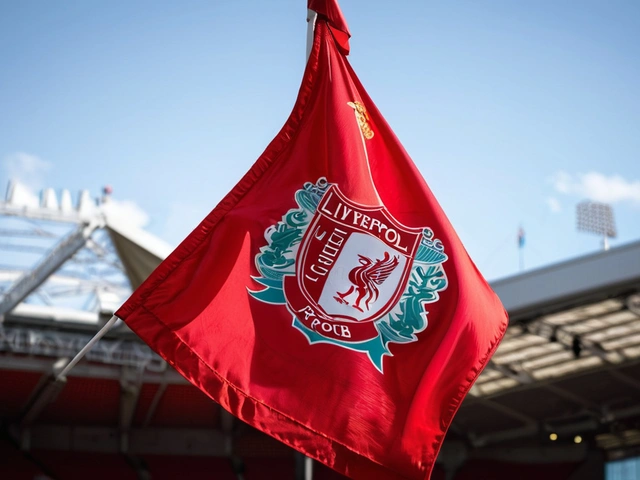For the 11th month in a row, petrol and diesel prices across India have stayed unchanged, a rare stretch of stability that’s quietly reshaping household budgets and small business planning. As of November 3, 2025, the national average for petrol remains at ₹94.77 per litre in New Delhi, while diesel holds at ₹87.62 — unchanged since December 1, 2024. Even as global crude oil prices climbed, India’s state-run oil marketing companies chose not to pass on the increases, a decision that’s drawn quiet praise from consumers and scrutiny from analysts. The Oil and Natural Gas Corporation and other state-run oil marketing companies have kept their pricing engine in neutral, despite Brent crude hitting $75.24 per barrel and U.S. gasoline inventories falling to a two-year low.
City-by-City Fuel Price Map
While national averages suggest uniformity, the reality on the ground is far more varied. In Mumbai, petrol hits ₹103.50 per litre — the highest among major metros — while diesel climbs to ₹89.87. Meanwhile, in Chandigarh, drivers pay just ₹94.30 for petrol, the lowest in the country. The gap between the most and least expensive cities exceeds ₹13 per litre, a disparity driven by local taxes, transportation costs, and regional distribution networks. In Thiruvananthapuram, petrol hits ₹107.48, nearly ₹13 higher than in Chandigarh. Kerala’s Kozhikode and Thiruvananthapuram consistently rank among the priciest, reflecting the state’s higher VAT and logistical challenges.
Gas and LPG Adjustments Offer Relief
While fuel prices held firm, two other energy sectors saw adjustments. The government’s Administered Price Mechanism (APM) for domestic natural gas dropped to $6.55 per million British thermal units in November 2025 — down from $6.75 in October. This marks the second consecutive monthly cut, following a historic reduction to $6.41 in June, the first in two years. The APM price applies to gas produced by state-owned giants like Oil and Natural Gas Corporation and Oil India Limited, which together supply nearly 80% of India’s domestic gas. Yet production continues to decline: in September 2025, output fell to 2.82 billion cubic meters, a 3.8% year-on-year drop from 3 billion cubic meters in January.
On the commercial front, small businesses got a small reprieve. Starting November 1, 2025, the price of a 19kg commercial LPG cylinder fell in major cities. In Delhi, it dropped ₹5 to ₹1,590.50. Kolkata saw the steepest cut — ₹6.50 — bringing the price to ₹1,694.00. Mumbai and Chennai also saw reductions of ₹5 and ₹4.50 respectively. This follows a ₹15.50 hike in September, making November’s cuts feel like a correction rather than a windfall. Importantly, domestic LPG prices for households remained untouched, a deliberate policy choice to shield low-income families from volatility.
Why the Stability Amid Global Volatility?
Here’s the thing: global crude prices didn’t cooperate. Brent crude rose 2.83% to $75.24 per barrel. U.S. gasoline inventories plunged by 2.7 million barrels — far more than expected. Spot LNG prices for west India hovered at $10.80 per mn Btu, well above the APM gas rate. Yet India’s oil marketers held firm. Why? Analysts point to three factors. First, the government has been building a strategic buffer since 2023, using fiscal reserves to absorb price swings. Second, the monsoon-driven slowdown in industrial activity has softened demand pressure. Third, the political calendar looms: with state elections in key states like Rajasthan and Madhya Pradesh coming next year, the ruling party is keen to avoid fuel price shocks.
It’s not perfect. The decline in domestic gas production — now below 3 billion cubic meters for the sixth straight month — means India is importing more LNG, which is costlier. October’s LNG imports hit 2.28 million tonnes, up 8% from September but still 4% below last year. That’s a sign of shifting priorities: industry needs are being met, but at a higher cost. Meanwhile, consumers are benefiting from a policy that prioritizes short-term stability over long-term market alignment.
What Comes Next?
Experts don’t expect a fuel price hike before December. The government’s next review is scheduled for December 1, 2025. But if Brent crude climbs above $80 per barrel — a real possibility given Middle East tensions and U.S. refinery outages — pressure will mount. The real test will be whether the current stability can be maintained without draining fiscal reserves. For now, the message is clear: political stability outweighs market signals.
Background: The Long Game on Fuel Pricing
India’s fuel pricing system underwent a major shift in 2010, when diesel was deregulated, followed by petrol in 2014. Since then, prices have been linked to international crude and exchange rates, with daily adjustments. But since mid-2024, the government has increasingly intervened to smooth out volatility. The 11-month streak is the longest since 2017. Back then, a similar pause was followed by a sharp 12% surge in January 2018. This time, the government is more prepared. It has also expanded the use of the Oil and Natural Gas Corporation’s price stabilization fund, which now holds over ₹24,000 crore — enough to absorb several months of price spikes.
Frequently Asked Questions
How does this petrol price stability affect everyday drivers?
For the average Indian driver commuting 30 km daily, the 11-month price freeze has saved roughly ₹1,200 on petrol alone — assuming a 6-litre daily consumption at ₹95/litre. This adds up to over ₹14,000 annually per vehicle. In cities like Mumbai and Delhi, where fuel costs are highest, the savings are even more significant, easing pressure on middle-class households already stretched by inflation in food and housing.
Why is commercial LPG being cut but domestic LPG unchanged?
Commercial LPG is used by restaurants, hotels, and small manufacturers — sectors hit hard by the September hike. The November cut targets these businesses to reduce operational costs without triggering inflation in household budgets. Domestic LPG, subsidized under the Pradhan Mantri Ujjwala Yojana, remains untouched to protect low-income families. The government spends over ₹1.2 lakh crore annually on LPG subsidies — a line item it can’t afford to disrupt.
What’s the impact of falling domestic gas production?
India’s domestic gas output has dropped 6% since January 2025, forcing more reliance on imported LNG, which costs nearly double the APM price. This mismatch squeezes power plants and fertilizer manufacturers that depend on cheap domestic gas. Without new discoveries or investment in shale or deep-sea fields, the gap will widen — and so will the fiscal burden of subsidizing industrial gas use.
Could fuel prices jump suddenly in December?
Yes. If Brent crude hits $80 per barrel or the rupee slips past ₹85 to the dollar, a price hike is likely. The government’s fiscal buffer can only delay, not prevent, market corrections. Historically, 11-month freezes have been followed by 5–10% increases within 30 days. Analysts expect December’s review to be the most closely watched since 2023, with traders already pricing in a 40% chance of a petrol increase.
How do India’s fuel prices compare globally?
India’s petrol prices are higher than the U.S. ($0.78/litre) and China ($1.05/litre) but lower than the U.K. ($2.20/litre) and Germany ($2.15/litre). However, when adjusted for average income, Indian drivers pay a higher share of their earnings for fuel than most emerging economies. The current stability is a policy choice — not a reflection of low global prices.
Who benefits most from this price freeze?
Small transport operators, delivery services, and low-income families benefit most. A single truck driver in Uttar Pradesh can save ₹3,000–₹4,000 monthly on diesel. Meanwhile, the government gains political goodwill, especially in rural and semi-urban areas where fuel costs are a top concern. But long-term, the lack of price signals discourages investment in fuel efficiency and alternative energy — a hidden cost to the economy.




India’s keeping fuel prices flat while global oil climbs? That’s either genius or a ticking bomb.
Anyone else notice how Kerala’s petrol is almost $1.30 a liter while Chandigarh’s is barely above $1? That’s not market logic - that’s tax chaos. And nobody talks about how the poor in those high-tax states are getting squeezed harder just because they live in the wrong place.
My cousin drives a delivery van in Lucknow - he’s saving like $120 a month on diesel. That’s his kid’s school supplies, his mom’s meds, his rent buffer. This isn’t politics, it’s survival. And yeah, the government’s playing a long game, but for now? It’s working.
Oh wow, they’re cutting LPG for businesses but not households? So restaurants get a ₹6 discount while my aunt in Bihar still pays the same for her cylinder? Brilliant. Next they’ll give tax breaks to Starbucks but not to chaiwallahs.
India’s fiscal buffer is a Band-Aid on a hemorrhage. The APM gas price is artificially low - half the cost of imported LNG. This isn’t stability, it’s economic malpractice. The moment the buffer runs dry, the entire energy sector will implode. And no, the monsoon doesn’t fix structural decay.
Okay, let’s be real - this whole 11-month freeze is basically the government saying ‘we know you’re broke, so we’re gonna pretend oil didn’t just spike 3%’. But here’s the thing: the people who actually make fuel happen - the truckers, the small mechanics, the guys running those roadside dhabas - they’re the ones who feel this. My uncle runs a diesel pump in Rajasthan and he says, ‘We’re not making less money, we’re just making less profit, and that’s worse.’ And yeah, the LPG cut for commercial users? That’s not generosity - it’s damage control. Restaurants are closing, and they’re trying to keep the lights on. But the real kicker? Domestic LPG stays the same because the government’s scared of the Ujjwala Yojana backlash. Which is fair, but also kind of tragic. We’re protecting the poor by keeping prices fake, which means we’re not fixing the system - just delaying the crash. And when that crash comes? It’s gonna hurt way more than a ₹5 hike ever could.
So petrol is the same for 11 months but gas prices dropped? Wait, so the government is helping businesses but not families? That’s weird. Also, why is Mumbai so expensive? Is it because they’re charging extra for the view? 😅 I mean, I get it, taxes and transport, but still… ₹103 for petrol? That’s like paying for a fancy latte every time you fill up. And I’m just glad my cousin in Delhi saved like ₹5 on his LPG - even if it’s just a little. Hope it helps him pay his electricity bill.
The structural distortion here is textbook. The APM gas pricing mechanism is a relic of central planning - a price ceiling that creates chronic underinvestment in domestic production. Meanwhile, the strategic buffer fund, while politically astute, functions as a fiscal Ponzi scheme: it defers market correction by cannibalizing future fiscal space. The 11-month freeze isn’t stability - it’s a liquidity trap disguised as policy. The real risk isn’t the next hike; it’s the collapse of price signaling, which disincentivizes efficiency, locks in demand elasticity, and delays renewable transition. The government isn’t protecting consumers - it’s postponing the inevitable reckoning with India’s energy architecture. And when Brent hits $80? That’s not a price adjustment - it’s a systemic reset.
Feels like they’re just buying time. Not saying it’s bad - just… quiet.
Let’s be honest - this isn’t ‘stability,’ it’s moral cowardice. The government is using taxpayer money to subsidize middle-class convenience while ignoring the real problem: India’s energy infrastructure is decaying. Meanwhile, the poor are being shielded from LPG hikes, but the middle class? They’re getting a temporary illusion. This isn’t compassion - it’s political theater. And when the buffer runs out, the backlash won’t be from the poor - it’ll be from the middle class who thought they were ‘protected.’ And then what? Higher taxes? More debt? This isn’t policy. It’s a time bomb wrapped in a slogan.
While the current policy provides short-term relief to consumers, it is imperative to recognize that prolonged suppression of market-based pricing mechanisms may lead to significant inefficiencies in resource allocation. The strategic buffer fund, though commendable in intent, represents a temporary fiscal intervention that does not address the underlying decline in domestic gas production or the structural dependence on imported LNG. A sustainable energy future requires transparent pricing, incentivized domestic exploration, and phased subsidy reform - not political calibration. The stability observed is not a victory, but a postponement - and one that may exact a greater economic cost in the medium term.
India’s fuel pricing isn’t about economics - it’s about perception. The government knows that if petrol jumps during election season, it’s game over. So they’re using fiscal reserves like a magic wand. But here’s the twist: the people who benefit most aren’t the ones who need it - it’s the middle-class drivers who can afford cars but not price shocks. Meanwhile, the real energy crisis? The one where factories can’t get cheap gas and power plants are scrambling? That’s getting ignored. This isn’t a policy - it’s a distraction. And if you think this is helping the poor, you’re not looking at the LNG imports that are quietly eating up the budget. They’re not protecting families - they’re protecting votes.